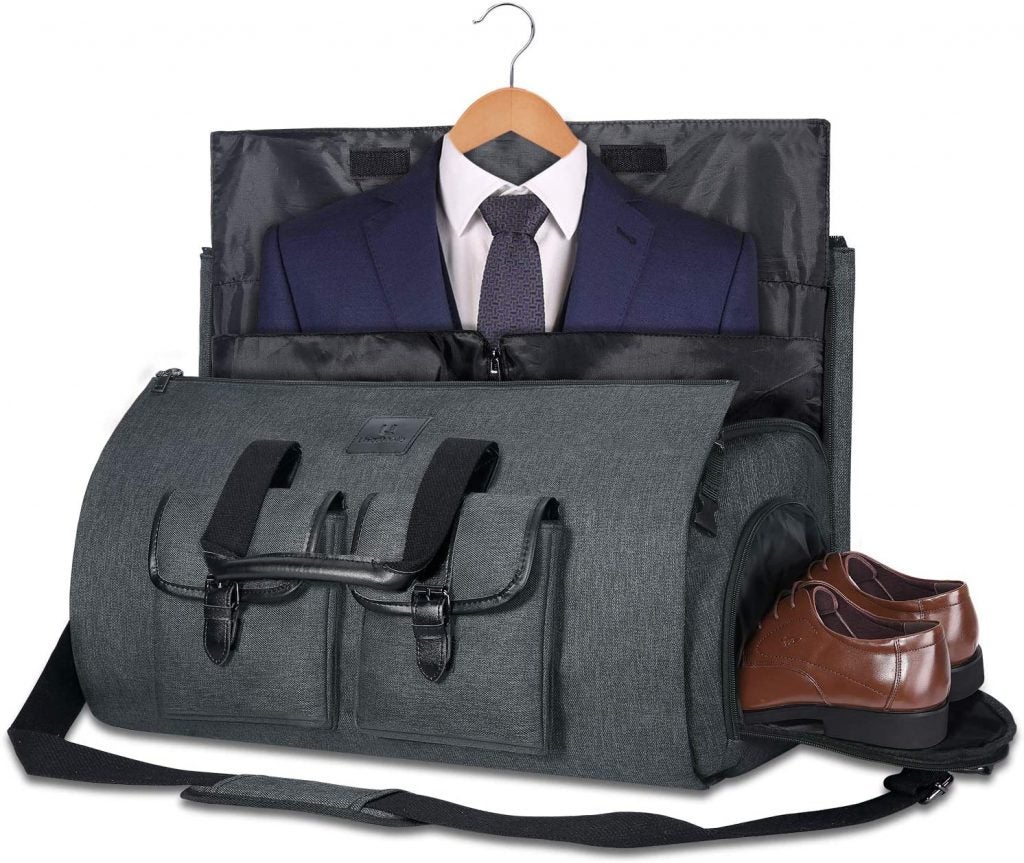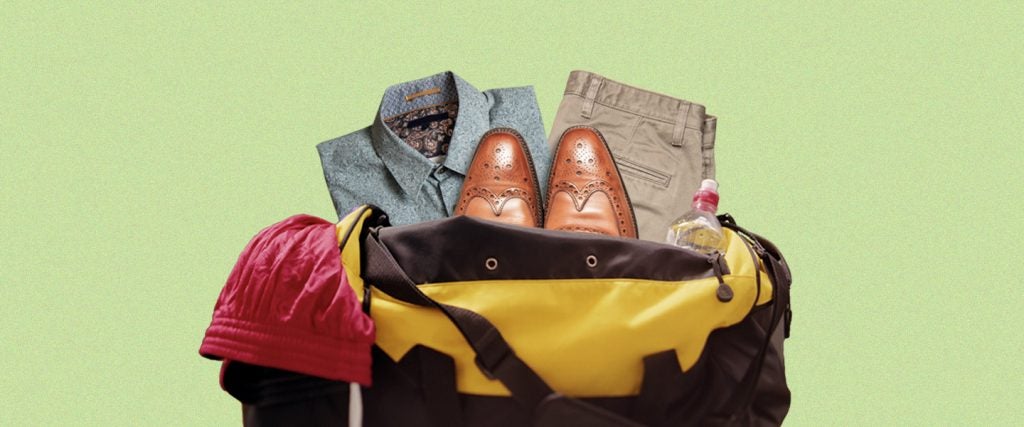During the periods of my career when I was required to pack for both the office and the gym, I typically opted to do one of two things: Either I’d tote my pre-packed suit into the locker room encased inside of a protective garment bag so that I could easily strip, shower and then don my office apparel after sweating my way through my workout clothes; or I’d carry the empty garment bag into the gym, change out of my suit into my gym clothes and then follow the exact same protocol.
Fortunately for all of us, the packing specialists of the world have evolved the modern methods of transporting work clothes and maintaining their pristine appearance. For me, this means the two-bagger routine at the gym is no longer necessary. These days, modern duffel bags are replete with special internal compartments and pouches, including some bags that enable full suits, shirts and ties to be rolled within them while still suspended from their hangers.

Many of these bags are advertised to appeal to travel-minded businessmen, with the accompanying photos displaying central compartments filled with laptops, books and stacks of clothing. But don’t be misled by this: Such compartments can also be repurposed for storing toiletries and soiled workout attire, while keeping a separate section completely unblemished for the storage of your work clothes.
But what if I don’t want to buy a special bag just to have a suit compartment?
In my opinion, you’re playing with fire if you permit your clean business wear to share the same space as your filthy gym wear. It will backfire on you eventually. However, if you absolutely insist on packing your work attire in an ordinary duffle bag, there are some specialized, expert-advised ways to fold your suits and your dress shirts so that they won’t be wrinkled messes by the time your workday commences.
Your shirt is the harder of the two items to retain in a wrinkle-free form, but there is a rather simple technique to get it in that ballpark, even if it happens to pick up a rather defined seam or two in the process. You begin by buttoning at least a few of the top buttons, if not all of them. From there, you lay the shirt on its front, and separately fold each sleeve into the upper shoulder region by adding two very precise folds to the lower portion of each sleeve. Then, after folding over each side of the shirt, it can be folded over twice vertically, starting from the bottom, to keep its structure tight. Basically, like so:
For a suit jacket, you begin by pushing the shoulders back and together, then pulling out the collar and the lapel so that they’re straight. While you’re still pinching the shoulders together, you tug at the collar to pull the jacket inside out. The jacket will look like it’s roughly rectangular in its orientation, and can now be folded in half from top to bottom, and easily laid flat inside of a duffle bag. The pants can sit atop the jacket by folding them over to even out the waist and the legs and folding them over once more after that. Again, here’s a nice visual aid:
If you’re smart, you’ll also line the interior of your gym bag with a plastic garbage bag to ensure that no errant shaving cream, toothpaste or aftershave winds up on your clothes prior to any kind of career-defining presentation.
I’ll say it one last time: This wouldn’t be my preferred option — i.e., forcing your suits and dress shirts to share the same space that your sweat and stench frequently inhabit. But it’s definitely the safest combination of folds to keep you from entering the workplace looking like you were out all night. After all, you want to light up the (board) room, not stink it up.

